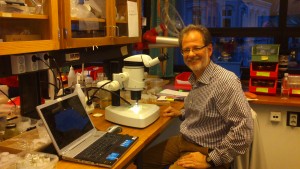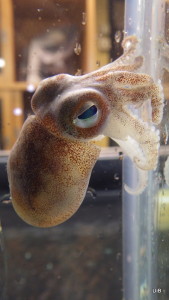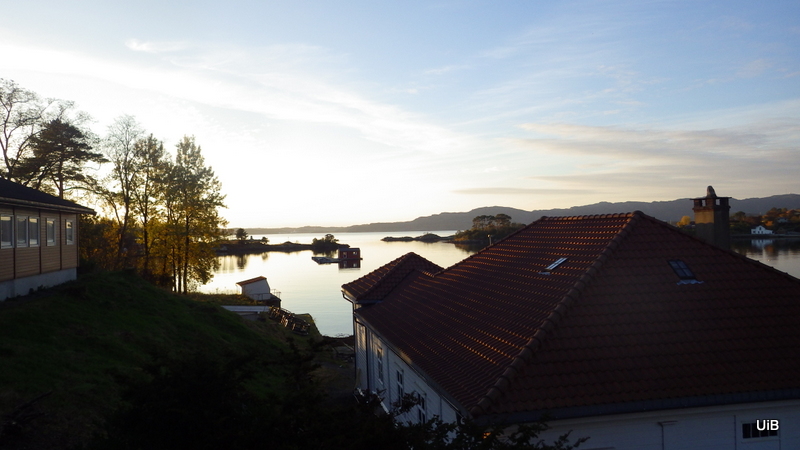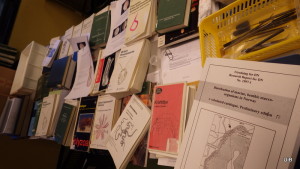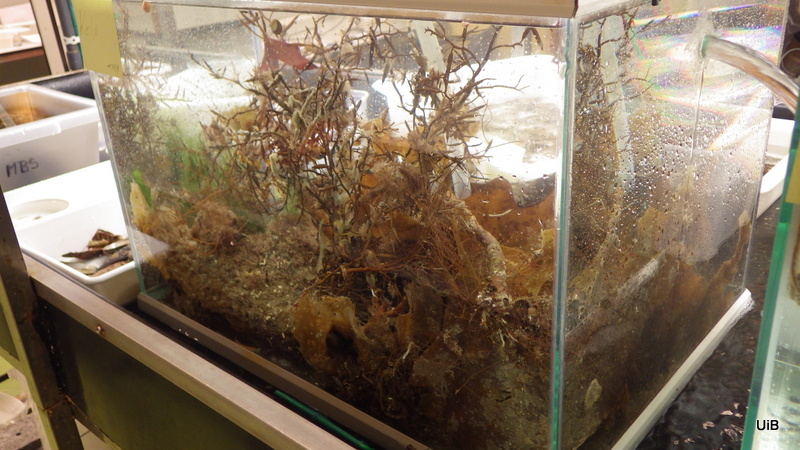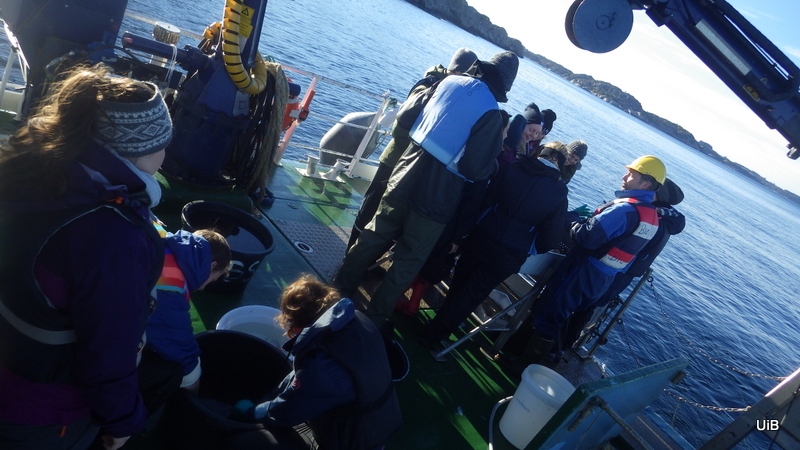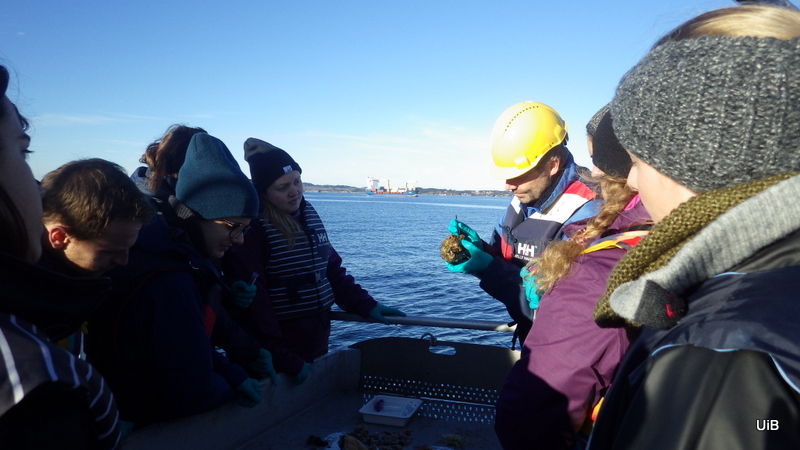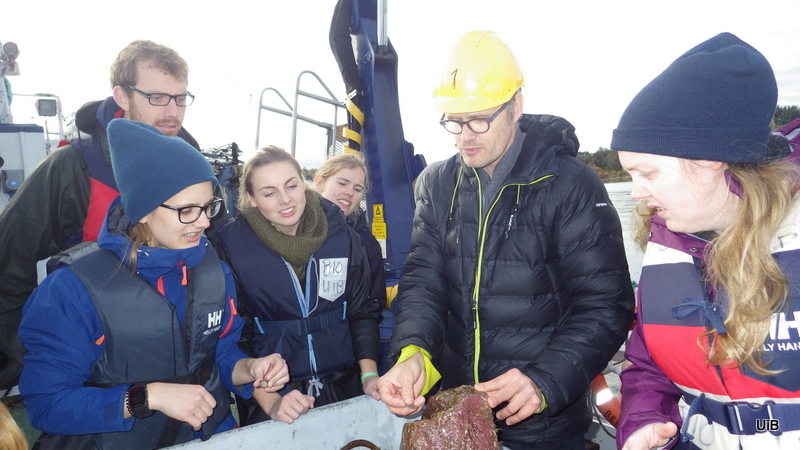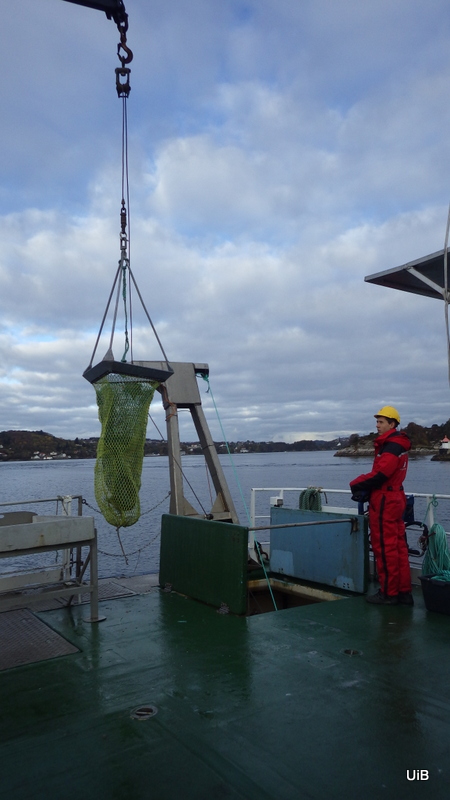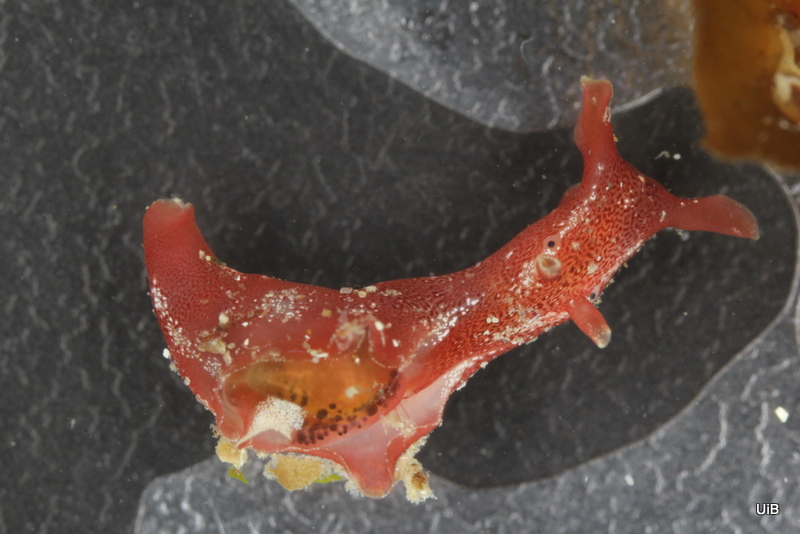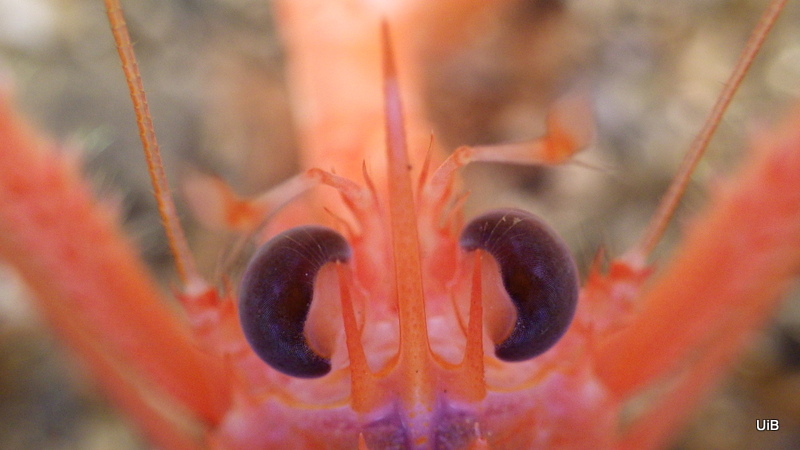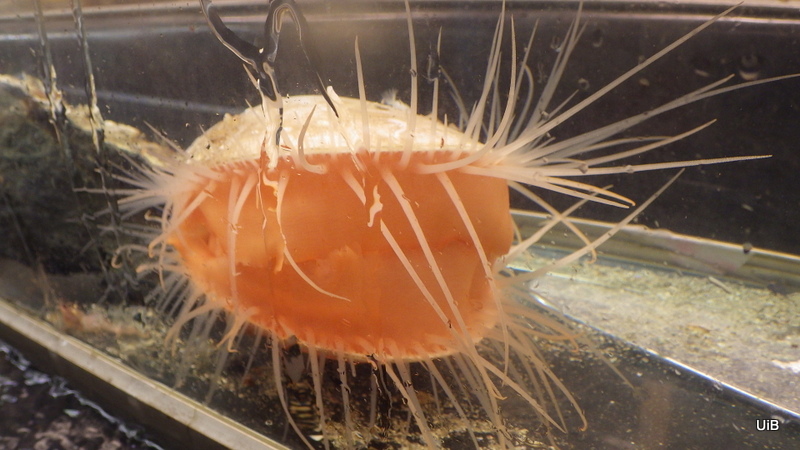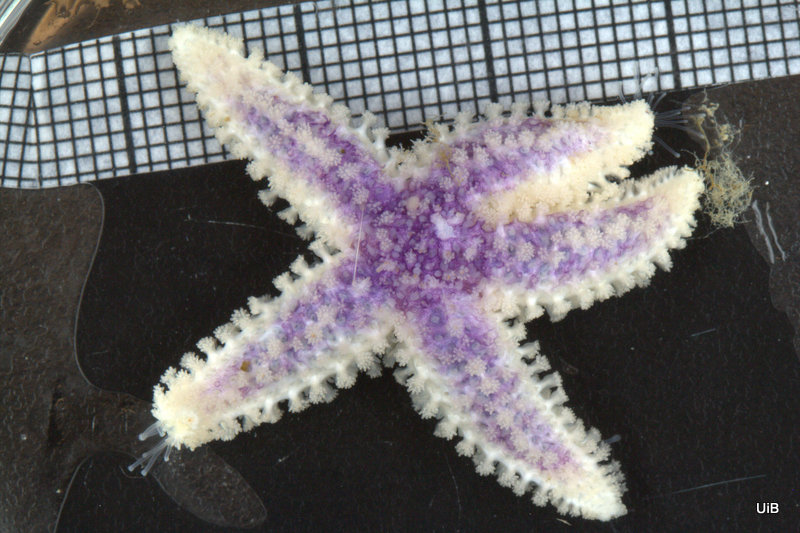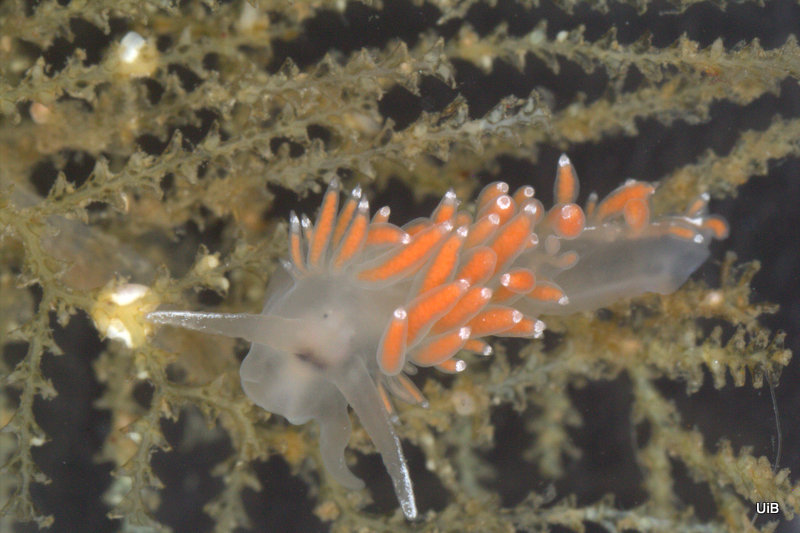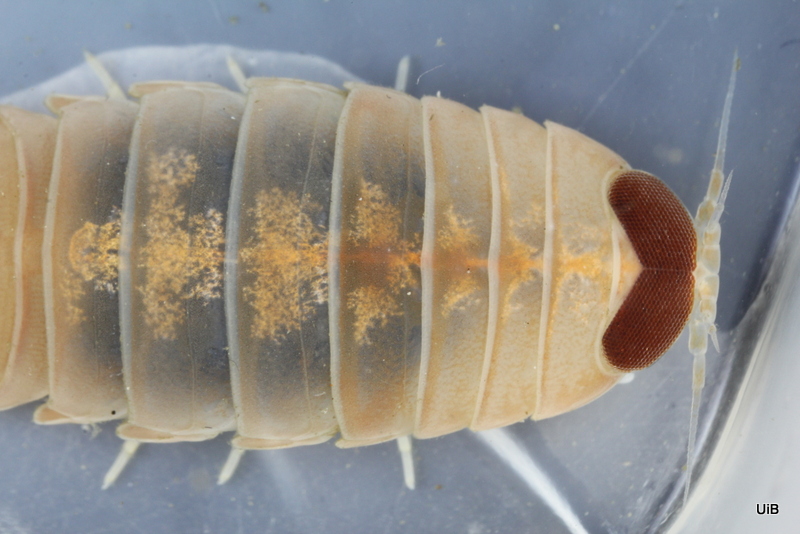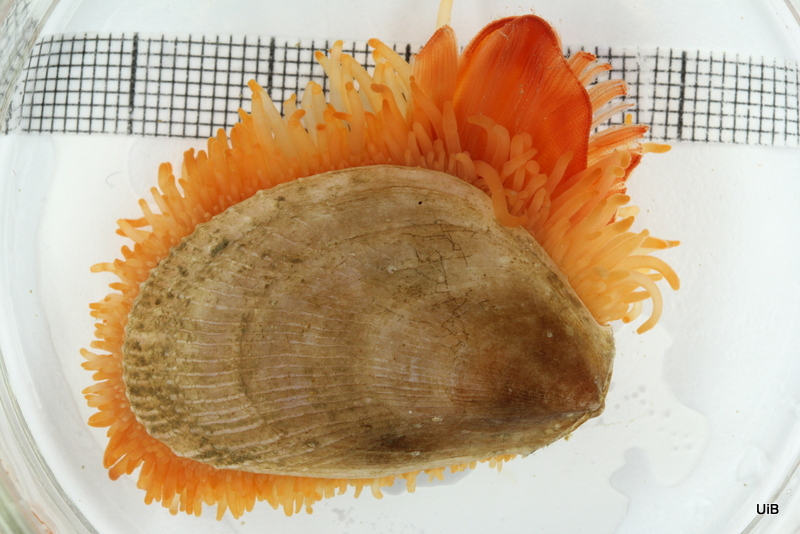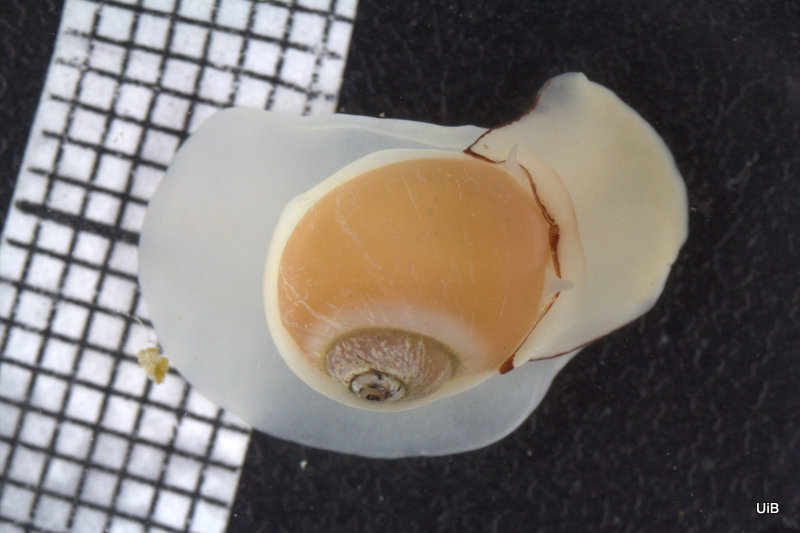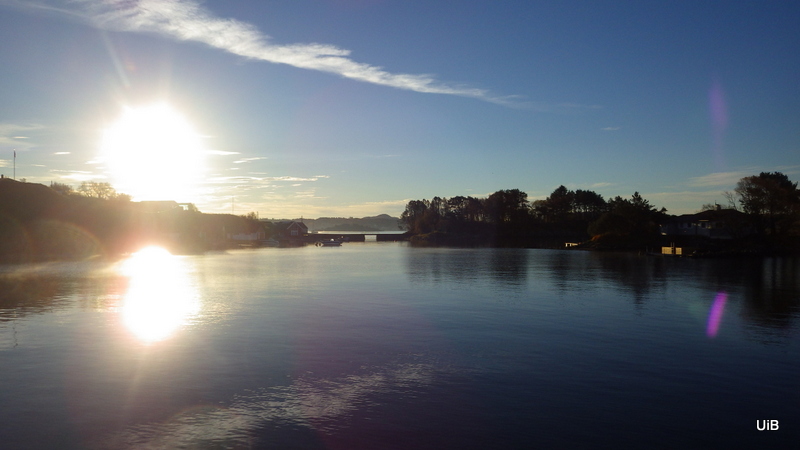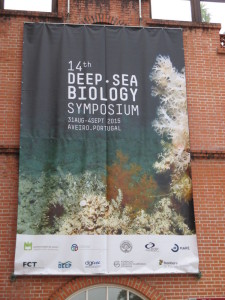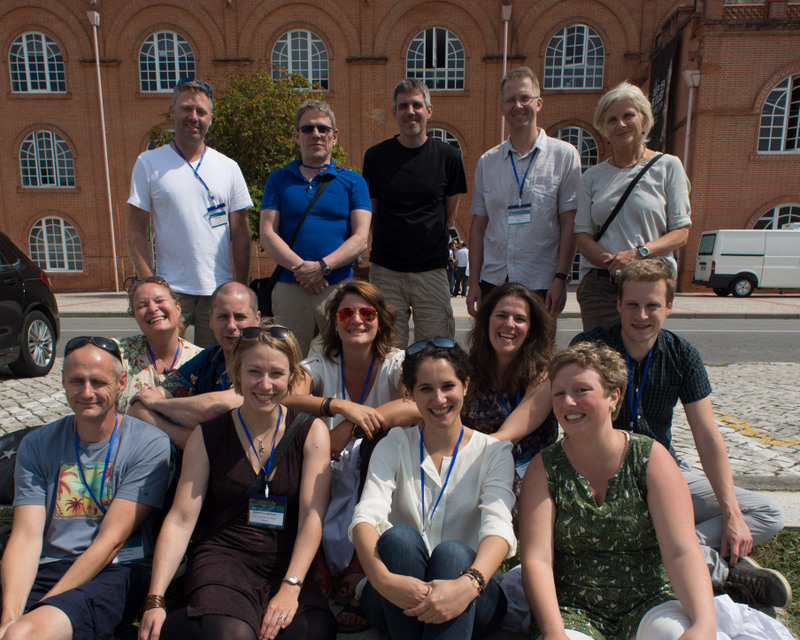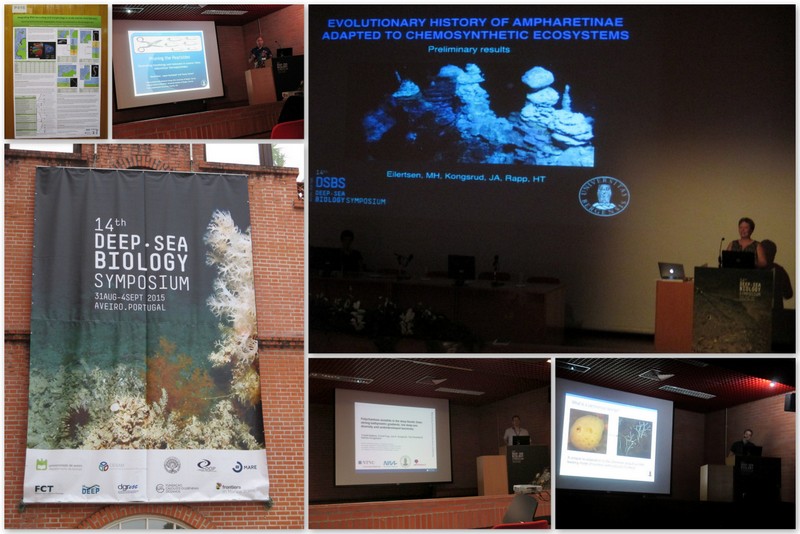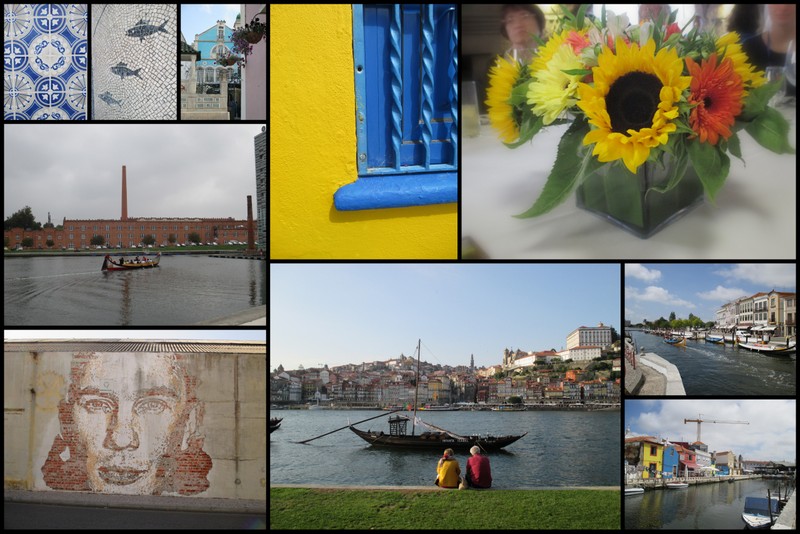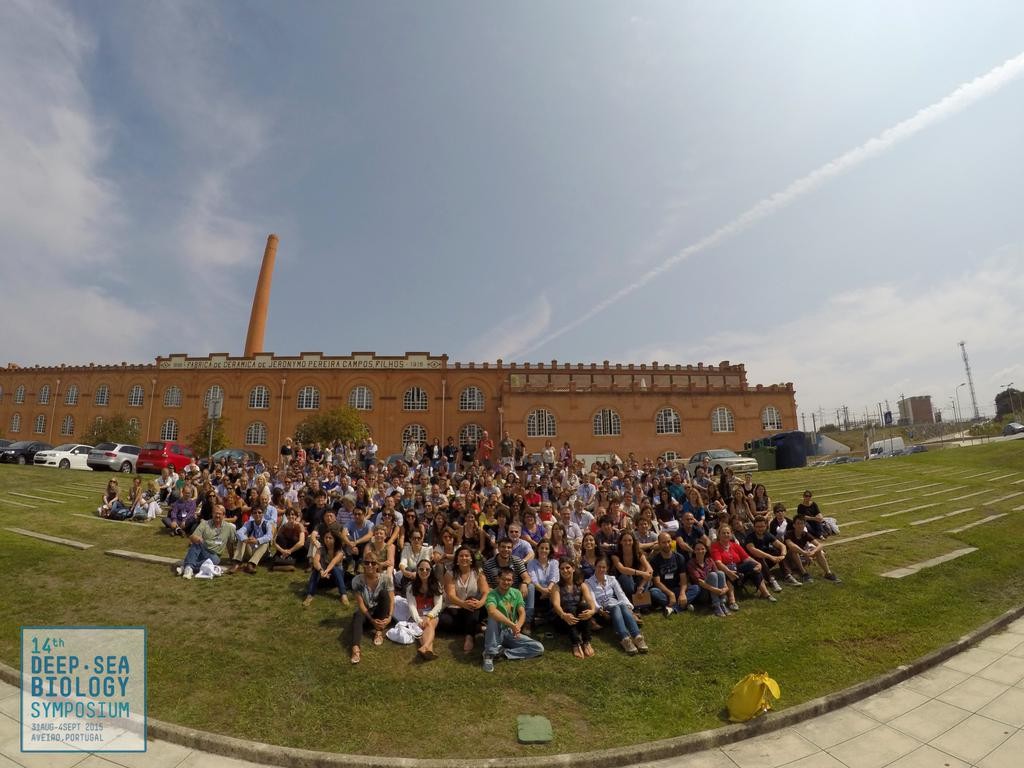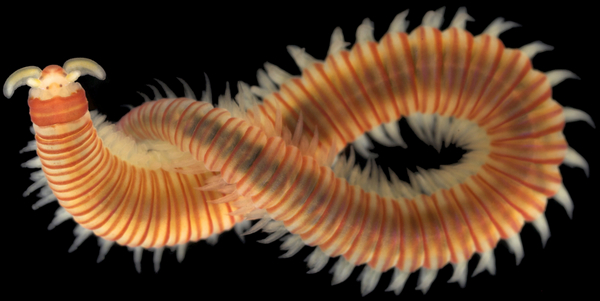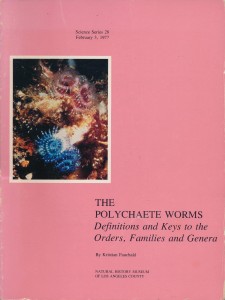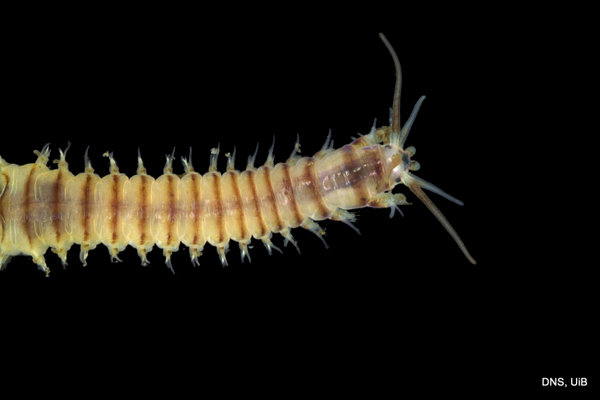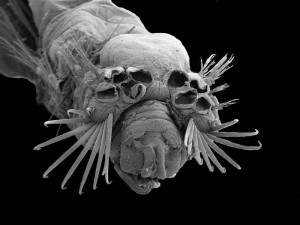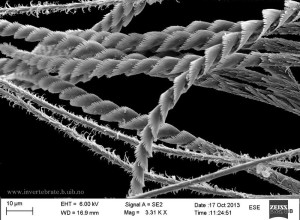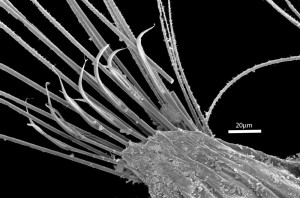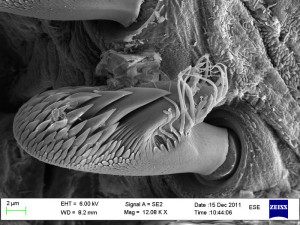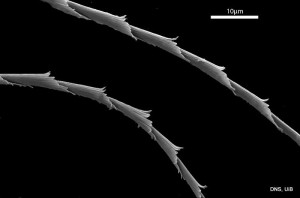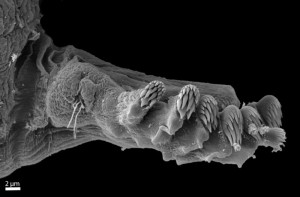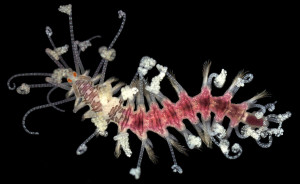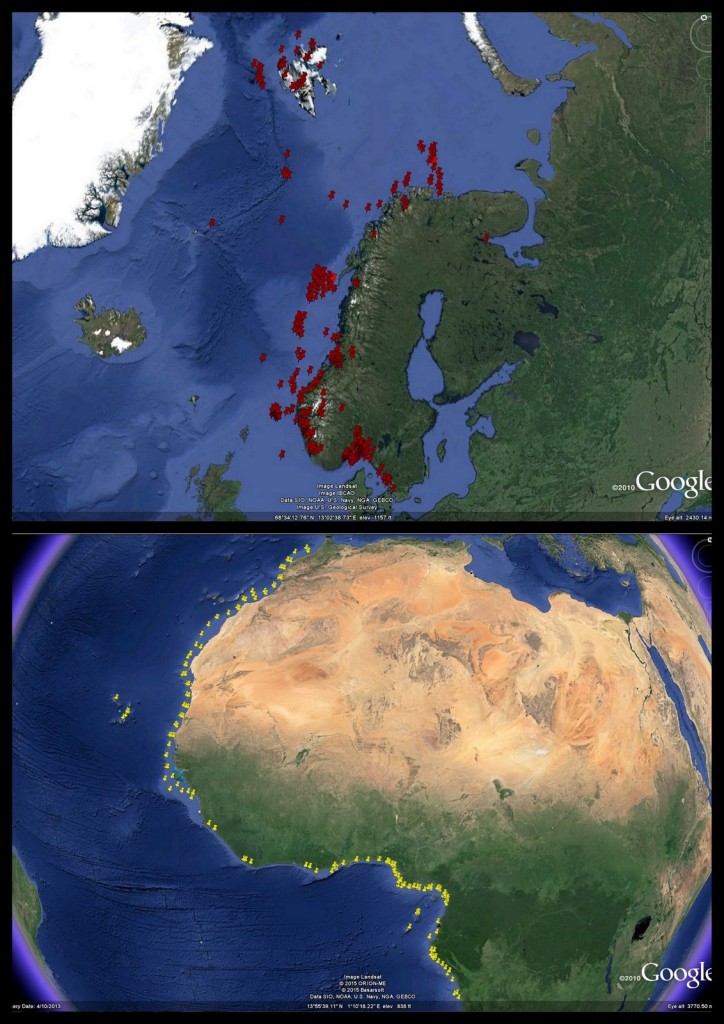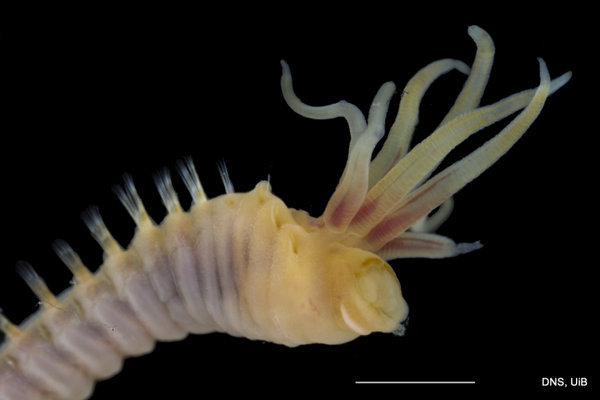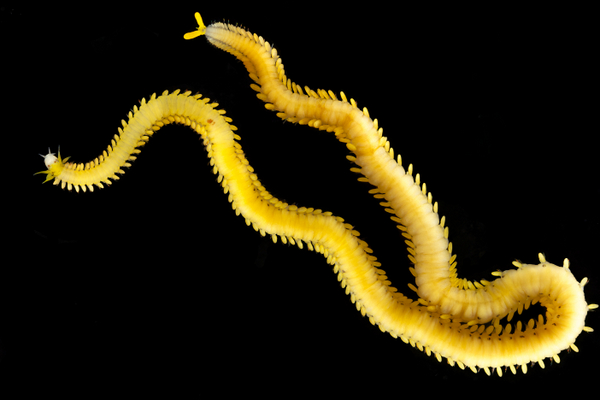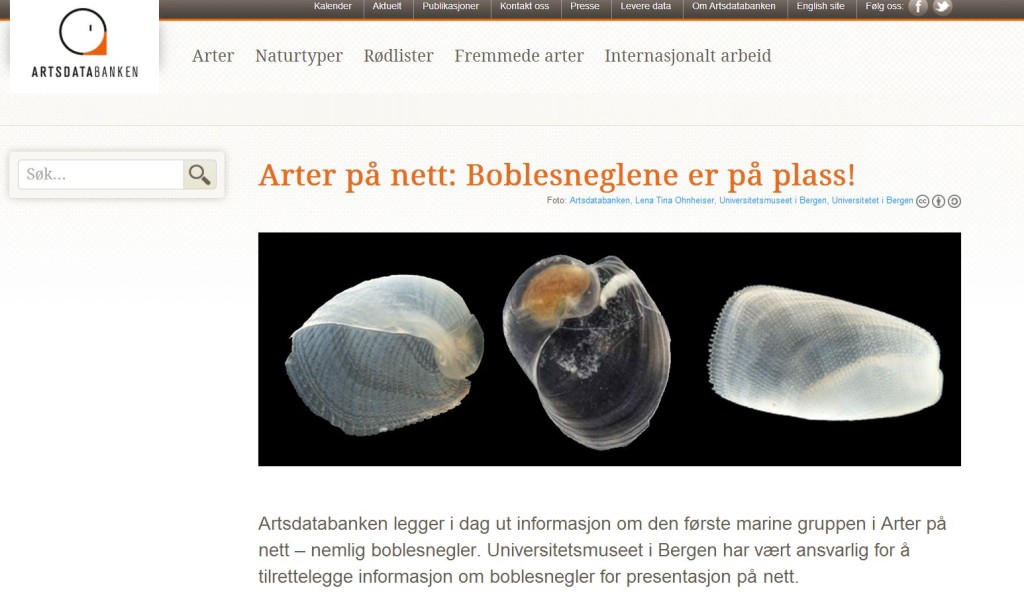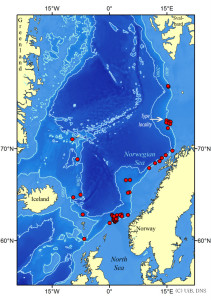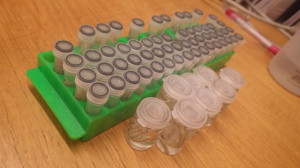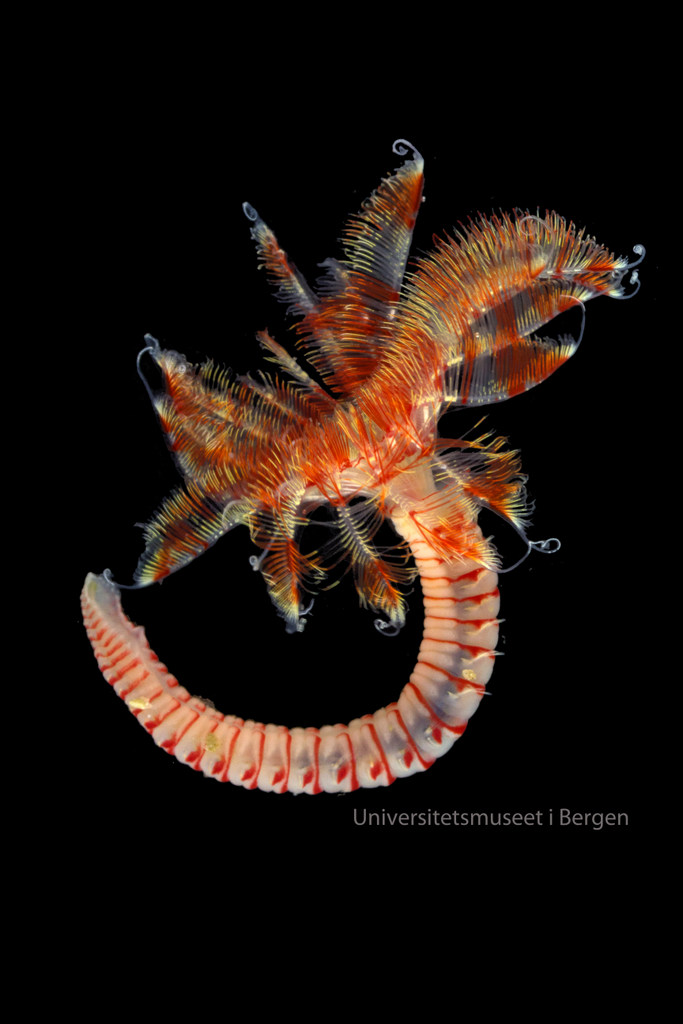Last week we had yet another visitor here, this time from the University of A Coruña in Spain. Julio was here to continue his work on polychaetes in the family Oweniidae, from both Norwegian and African waters.
Author Archives: katrine
Guest Researchers: São
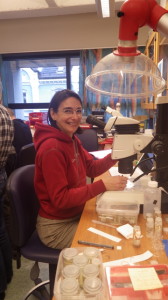 The invertebrate collections are high in demand these days, and we have a string of visitors coming here to examine the material. One of these is São from the University of Aveiro, Portugal. She works with polychaetes in the family Nephtyidae. In her own words:
The invertebrate collections are high in demand these days, and we have a string of visitors coming here to examine the material. One of these is São from the University of Aveiro, Portugal. She works with polychaetes in the family Nephtyidae. In her own words:
18-23 October – After an amazingly (for Bergen ☺) sunny Sunday, with a wonderful walk through the mountain, I had a very productive week looking through nephtyids from Western Africa. More than 300 specimens were examined and ascribed to 13 putative species. The results were very exiting! Interesting distribution patterns and a couple of potentially new species for science. Now we are waiting for barcodes…
Greeting from the Faunistics course!
I’ve spent both last week and the current one at the UiB field station – Espegrend – together with an enthusiastic bunch of marine biology master students and their teachers.
I am mainly here to collect animals for NorBOL, but it’s hard to resist the temptation to join in on the course itself every now and again – whether in the field or in the lab!
The baseline for the course is that the students will get to look at all sorts of freshly collected animals from various habitats and learn to identify them.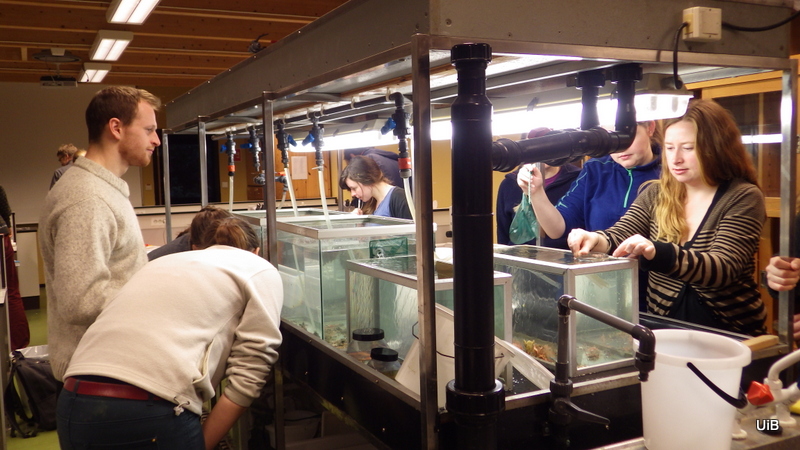
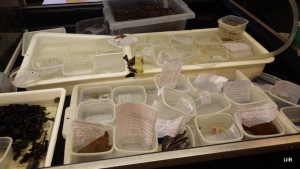
Identified samples – at the end of each day, the students present the animals that they have studied that day to their classmates.
Whilst doing so, they acquaint themselves with the different keys and terminology used to identify the critters, learn which species are associated with which habitats, and get practical experience of how to collect and treat samples of various kind (you would for example use a different kind of gear to collect on a muddy substrate than on a rocky slope).
So it is a busy couple of weeks, with lots to learn.
Tomorrow is the final day of collecting (it will be “parasite day”, which means a trawl to collect fish and various other animals likely to have parasites on (or in!) them.
Today we have focused on sponges, yesterday it was zooplankton, Monday was polychaetes – and so it goes!
Here are some of the animals that we have been working on:
- Aplysia punctata, sea hare
- Close-up of a Munida
- Acesta excavata, a fancy bivalve
- Leptasterias mulleri
- Flabellina gracilis
- A parasitic isopod in the genus Aega
- Limaria hians
- A snail in the family Naticidae, we’re not sure of the species yet.
The weather last week was…interesting, as was the absolute downpour a student and I went out in Monday morning – but today was simply a beautiful day for field work!
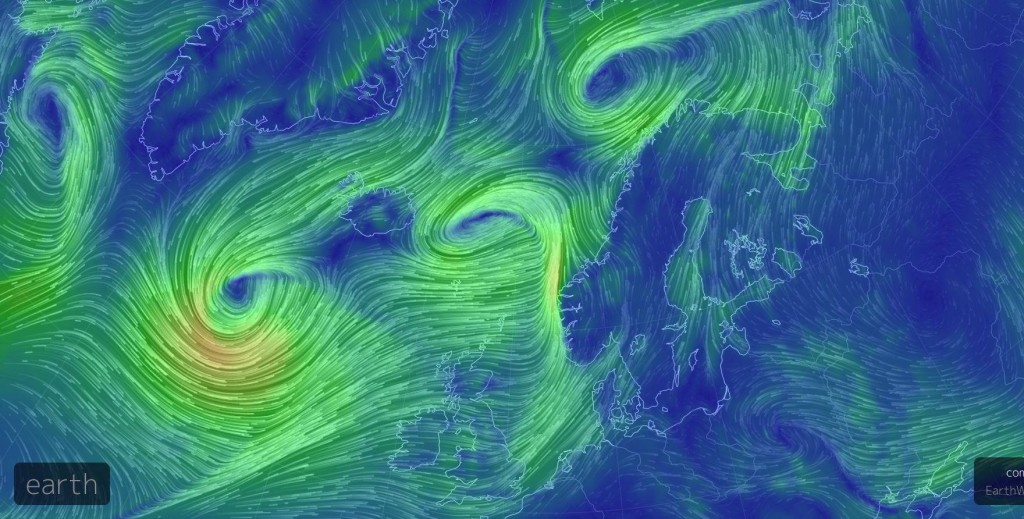
Stormy weather! Thankfully it passed after the first week. The map is from the really cool page earth.nullschool.net
As well as (re)presenting the Museum (yes, we do other things than the exhibitions, and ye-ees, we are interested in new students!), I gave a presentation of NorBOL and the work we are doing on marine animals last week (so far it is only animals, we will start with the marine macro algae the coming spring). I have been collecting quite a few new species that are to be barcoded from what the students work on, as well as supplementing what we have. In addition I will bring back some nice (but so far unidentified) samples to the Museum that we will continue to work on.
And who knows – maybe I have recruited some future collaborators?
The 14th Deep-Sea Biology Symposium
- 5 days
- ~200 talks
- ~240 posters
- 35 nationalities
- 360 enthusiastic participants
- Immeasurable cups of coffee & lots of pastries
The 14th Deep-Sea Biology Symposium was arranged in Aveiro, Portugal between 31st of August and 4th of September, and these happy people were amongst the participants.
The Norwegian University/museum entourage came from the Biological Institute (9), the University Museum (4), and the NTNU University Museum (1).
The topics of the conference was divided into seven main themes:
- Biodiversity and ecosystem functioning
- Advances in taxonomy and phylogeny
- Autoecology
- Connectivity and biogeography
- Evolutionary history and fossil records
- Natural and anthropogenic disturbance
- Stewardship of our deep oceans (DOSI)
(more details about the themes can be found here)
Our contributions ranged from sponges to fish, and included both talks and posters.
In no particular order (UM people in bold):
Eilertsen MH, Kongsrud JA, Rapp HT – Evolutionary history of Ampharetinae (Ampharetidae, Annelida) adapted to chemosynthetic ecosystems
Hestetun JT, Vacelet J, Boury-Esnault N et al – Phylogenetic relationships of carnivorous sponges
Rees DJ, Byrkjedal I, Sutton TT – Pruning the pearlsides: reconciling morphology and molecules in mesopelagic fishes (Maurolicus: Sternoptychidae)
Bakken T, Oug E, Kongsrud JA, Alvestad T, Kongshavn, K – Polychaetous annelids in the deep Nordic Seas: strong bathymetric gradients, low deep-sea diversity and underdeveloped taxonomy
Xavier JR, Marco J, Rapp HT, Davies AJ – Predicting suitable habitat for the bird’s nest sponge Pheronema carpenteri (Porifera, Hexactinellida) in the Northeast Atlantic
Posters:
Kongshavn K, Kongsrud JA, Tandberg AHS, Alvestad, T, Bakken, T, Oug, E, Willassen E – Intergrating DNA-barcoding and morphology to study marine invertebrates – Exploring biodiversity and biogeography of deep-sea polychaetes in the Norwegian Sea
Hestetun JT, Xavier JR, Rapp HT – Carnivorous sponges from the Southwestern Indian Ocean Ridge seamounts
Alvizu A, Tendal OS, Rapp HT – Deep-water calcareous sponges (Calcarea: Porifera) from the Norwegian, Greenland and Iceland Seas (GIN) – from abyssal plains to mid-ocean ridges and hydrothermal vents
(Xavier JR), Pereira R, Gomes Pereira JN, Tempera F et al – Sponge assemblages of the Condor seamount (Azores) characterized from underwater imagery
Olsen BR, Troedsson C, Hadziavdic K et al – The influence of hydrothermal fluids on pelagic eukaryotic microorganism diversity and subsequent prey selection in a pelagic amphipod in the Nordic Seas
In addition to these direct contributions, it was very gratifying to see our friends and colleagues presents results that were in part based on University Museum assistance, whether through participation on cruises with us, loans of material, visits to the Museum collections or data made available. Quite a few of our photos also found their way into presentations, which is always fun!
[slideshow_deploy id=’1240′]
It was a busy week with a lot of information to absorb and a lot of old and new acquaintances and friends to talk to. We used this opportunity to spread the word about our current projects, and especially to discuss the challenges and potential of barcoding marine invertebrates.
We are very grateful to the organizing committee for taking on the herculean task of setting up such a wonderful symposium!
Obrigada/o!
The 1st International Polychaete Day!
Welcome to our contribution to the very first International Polychaete Day!
Today, we want to share information and photographs of these amazing creatures that usually reside in the deep blue, and who therefore haven’t gotten the public attention that they deserve (until now!). The event will take place world wide, starting at the Australian Museum in Sydney and move through the time zones where it will be celebrated in Russia, Norway, the UK, and in the USA – amongst others!
Kristian Fauchald
The celebration has been initiated as a way to commemorate Kristian Fauchald, a key figure in the polychaetologist community for many years.
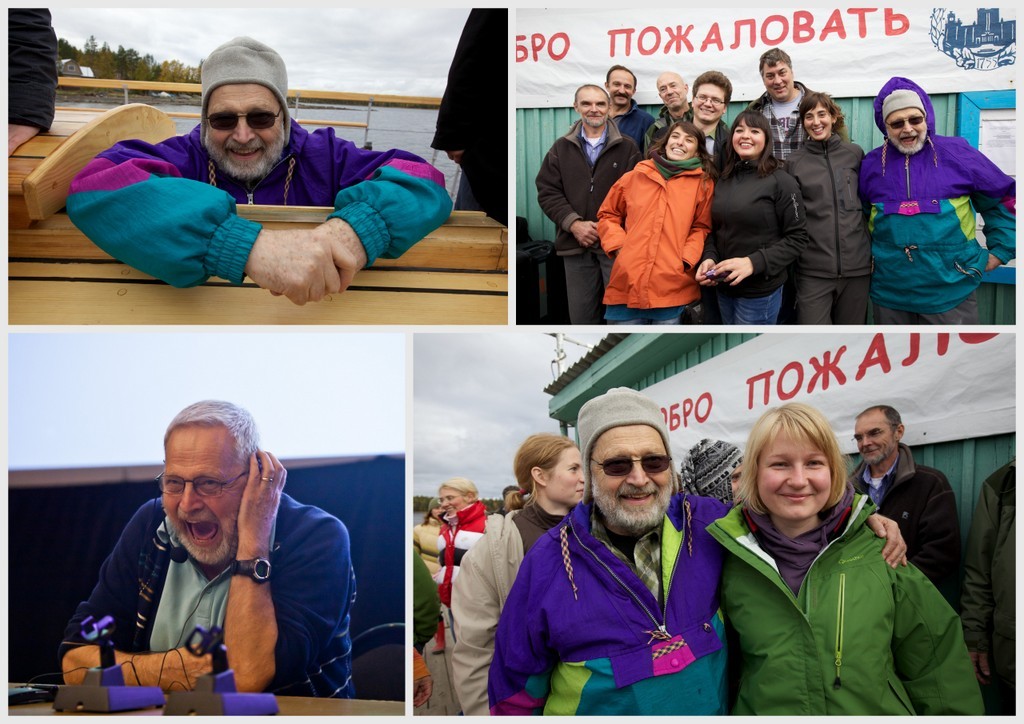
Kristian Fauchald (1935-2015). Top and bottom right photos from the International Polychaete School held at the White Sea Biological Station of The Moscow State University in 2011, © A. Semenov. Bottom left: from Kristian’s public lecture in Moscow in 2011 © Dynasty Foundation
Amongst many other achievements, he was the author of the famous “pink book”, which has served as an introduction to the world of polychaete taxonomy for many of us.
Kristian was born in Norway in 1935, and studied biology at the University of Bergen until beginning his doctorate work in California in 1965. An obituary by Fredrik Pleijel and Greg Rouse can be found at the World Register of Marine Species (WoRMS), which he was a founding editor of:
Obituary – Kristian Fauchald
He had a big, hearty laugh, a even bigger heart and a keen interest in the world around him – and he will be sorely missed.
Today, the 1st of July 2015, would have been Kristian’s 80th birthday, so it seems an appropriate day to blitz the public with an appreciation for the amazing animals that Kristian loved so much.
The Annelida
The Phylum Annelida, the “ringed worms”, includes two classes, the Polychaetae and Clitellata (Subclasses Oligochaeta and Hirundinea). Annelids typically have a slender cylindrical body (with a head in one end and an anus in the other), and externally visible annulations along the body – think of an ordinary earth worm (who belong in the Oligochaeta), and you have a typical annelid! The polychaetes are extremely common in the marine environment, from coastal areas to the deepest areas of the world oceans. These days, scientist are working on unravelling the family tree of the Annelida, if you are interested you can start reading about the phylogeny of annelid evolution here (Struck et al 2011).
Polychaetes
The Polychaeta (Gr. Polys = many, Lat. chaeta = bristle), or bristle worms, often have – as the name suggests – conspicuous chaeta or bristles along their body. The bristles are found on parapods; locomotory structures typically found on each side of the body segments. They can be simple, hairlike structures, or they can be much more complex – as pictured below.
Details related to the types of bristles provide in many cases important taxonomical characters, and identification of species often requires observation of bristles in a regular microscope. Scanning Electron Microscope (SEM) is used to examine the finest details of the bristles when we are working on describing species – the photos below are taken using SEM.
- Heads-on view of a Ampicteis ninoae in a SEM
- Chaeta of a Maldanidae
- Parapodium with bifurcated (fork-like) chaeta on a Scalibregmatidae
- Maldanidae uncini or hooks on neuropodium
- Bristles on a Maldane sp
- Parapodia with hooks on a Ampharete undecima
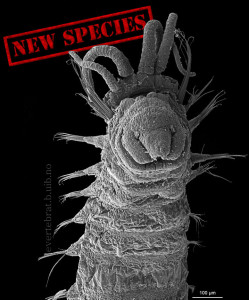
Ampharete undecima. One of the tools used when describing a new species is the electron microscope, which allows us to take very detailed photographs of the animals. Photo: K. Kongshavn
There are more than 12 000 described species of polychaetes, and the vast majority of these are marine.
They live from the intertidal to the abyssal (all the way to the bottom of the Mariana trench, at approximately 10.970 meters depth! More here)
Polychaetes come in a wide variety of shapes and sizes, from “Barry the giant sea worm” at 1.2 m (!) to minute species like Ampharete undecima, the new species we described last year which is up to 5 mm in length. They range from fast, predatory hunters to burrowers and tube-dwellers.
The Australian Museum in Sydney – which hosted the previous International Polychaete Conference – har written a nice introduction to the polychaetes on their web page, you will find it here
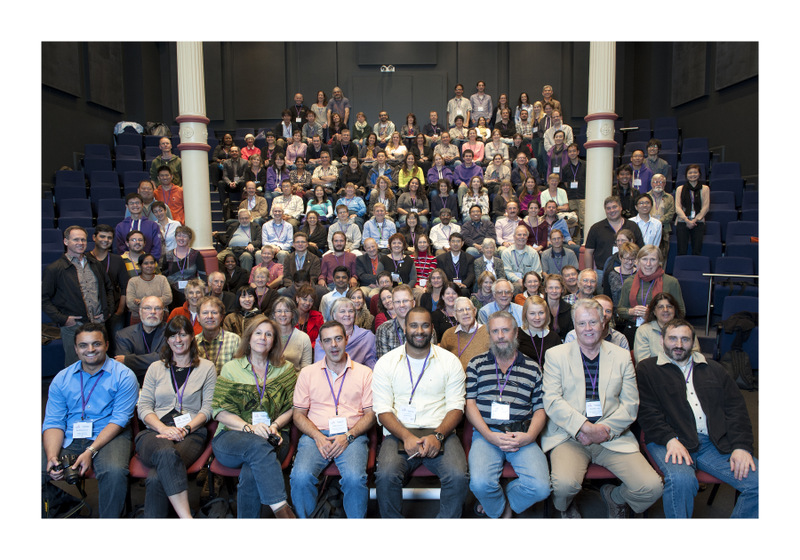
Group photo of the assembled polychaetologists in Sydney in 2013, Kristian is sitting next to the left column (photo © the IPC 2013 crew)
There are about 700 described species of polychaetes occurring in Norwegian waters – and the number is steadily increasing, as new species are being described every year, together with new occurrences for known species. Cryptic species – two or more morphologically similar species that erroneously have been classified as one – are also abundant in polychaetes, raising the species count even further.
Research
There is a substantial amount of ongoing research taking place, and at the University Museum the focus is on polychaete taxonomy:
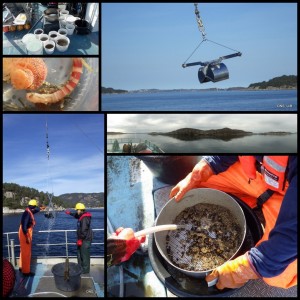 Our scientific collections are of course of vital importance as a source of material and data dating back all the way to “Den Norske Nordhavs-expedition, 1876-1878” (book 1 can be found here) and the 1910 Michael Sars Expedition (“The depths of the ocean : a general account of the modern science of oceanography based largely on the scientific researches of the Norwegian steamer Michael Sars in the North Atlantic“). For an account of some of the earliest collections and taxonomic works on the Norwegian polychaete fauna and how it ties in with present work, see Oug et al 2014.
Our scientific collections are of course of vital importance as a source of material and data dating back all the way to “Den Norske Nordhavs-expedition, 1876-1878” (book 1 can be found here) and the 1910 Michael Sars Expedition (“The depths of the ocean : a general account of the modern science of oceanography based largely on the scientific researches of the Norwegian steamer Michael Sars in the North Atlantic“). For an account of some of the earliest collections and taxonomic works on the Norwegian polychaete fauna and how it ties in with present work, see Oug et al 2014.
However, there is always a need for new material, and we do a fair bit of collecting ourselves, especially in the Bergen area. Above are some action shots of us collecting in the local fjords.
We are currently in the final year of the 3-year project “Polychaete diversity in the Nordic Seas – from coast to abyssal”, affectionately nicknamed PolyNor. You can find information about PolyNor workshops and work taking place at the University Museum by clicking here. This project is financed by the Norwegian Biodiversity Information Centre, and relies heavily on fresh material collected by the MAREANO-project (Marine AREAl database for NOrwegian waters).
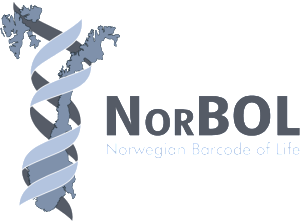 Through the Norwegian Barcode of Life (NorBOL) project, we are working on building a comprehensive library of genetic barcodes: short, species specific DNA sequences. Polychaetes are a focus group here, and so far we have submitted 1900 samples collected in Norwegian waters. Unfortunately, polychaetes are tricky costumers when it comes to genetic barcoding, and we are working on increasing the success rate. So far we have barcodes on about 70% of the species we have submitted, but as only 40% of the samples result in barcodes, a significant proportion of the diversity is still missing. We have also barcoded quite a lot of African polychaetes through our MIWA-project (Marine Invertebrates of Western Africa). Below are two maps with pins showing the localities that we have submitted polychaetes from for barcoding in the BOLD database.
Through the Norwegian Barcode of Life (NorBOL) project, we are working on building a comprehensive library of genetic barcodes: short, species specific DNA sequences. Polychaetes are a focus group here, and so far we have submitted 1900 samples collected in Norwegian waters. Unfortunately, polychaetes are tricky costumers when it comes to genetic barcoding, and we are working on increasing the success rate. So far we have barcodes on about 70% of the species we have submitted, but as only 40% of the samples result in barcodes, a significant proportion of the diversity is still missing. We have also barcoded quite a lot of African polychaetes through our MIWA-project (Marine Invertebrates of Western Africa). Below are two maps with pins showing the localities that we have submitted polychaetes from for barcoding in the BOLD database.
Efforts are ongoing on the taxonomy of both Norwegian and West African polychaetes – we can for certain say that “more research is needed!” on the topic.
The University Museum also participates in the education of polychaetologists for the future: One of our students defended his Master of Science on taxonomy of the genus Diopatra in the family Onuphidae last Friday, you can read more about that here.
To sum up, polychaetes – bristle worms – are fascinating animals that have adapted to a wide variety of habitats and modes of life. They are incredibly diverse, are important parts of the marine food webs, they help turn over sediments (like earth worms do on land), they can build reefs with their tubes, and they even have their own International Day!
Below you will find a slideshow featuring some of the amazing polychaete diversity, we hope you will enjoy it!
[slideshow_deploy id=’1132′]
If you would like to see how other institutions are celebrating today,
then head over to Twitter and the tag
Selected references:
Alvestad, T., Kongsrud, J.A., Kongshavn K. (2014) Ampharete undecima, a new deep-sea ampharetid (Annelida, Polychaeta) from the Norwegian Sea Memoirs of Museum Victoria 71 :11-19 (2014) Open access
Fauchald, K. 1977. The polychaete worms, definitions and keys to the orders, families and genera. Natural History Museum of Los Angeles County: Los Angeles, CA (USA) Science Series 28:1-188 Available online at http://www.vliz.be/imisdocs/publications/123110.pdf (this is “the pink book”!)
Oug E, Bakken T, Kongsrud JA. 2014. Original specimens and type localities of early described polychaete species (Annelida) from Norway, with particular attention to species described by O.F. Müller and M. Sars. Memoirs of Museum Victoria 71: 217-236. Open Access.
Thank you to Nataliya Budaeva for supplying photos of Kristian, and to Arne Nygren and Fredrik Pleijel for polychaete photos!
Friday Photo: prequel to the 1st International Polychaete Day!
Bubble snails in “Species online”
The Norwegian Taxonomy Initiative has an ongoing effort to present species in a scientific but user friendly context in their concept “Species online”. Yesterday the first marine group of animals was released, the Cephalaspidean gastropods. These pretty creatures are also known as “bubble snails”. This is the work of the malacologists at the University Museum of Bergen, go and have a look!
Publications
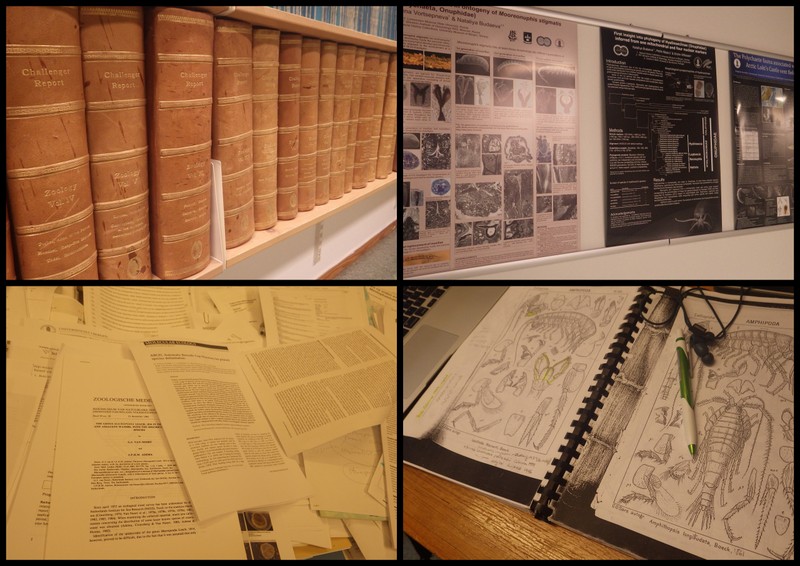
Scientific publications: From leather bound tomes to printouts, taxonomic keys in frequent use, presentations and posters
We’ve compiled a list of recent (2013-present) publications by employees at the Invertebrate collections, and you can find it here (and as a tab at the top of the page)
A new polychaete species!
Meet Ampharete undecima, a new species of polychaete (bristle worm) that we recently described:
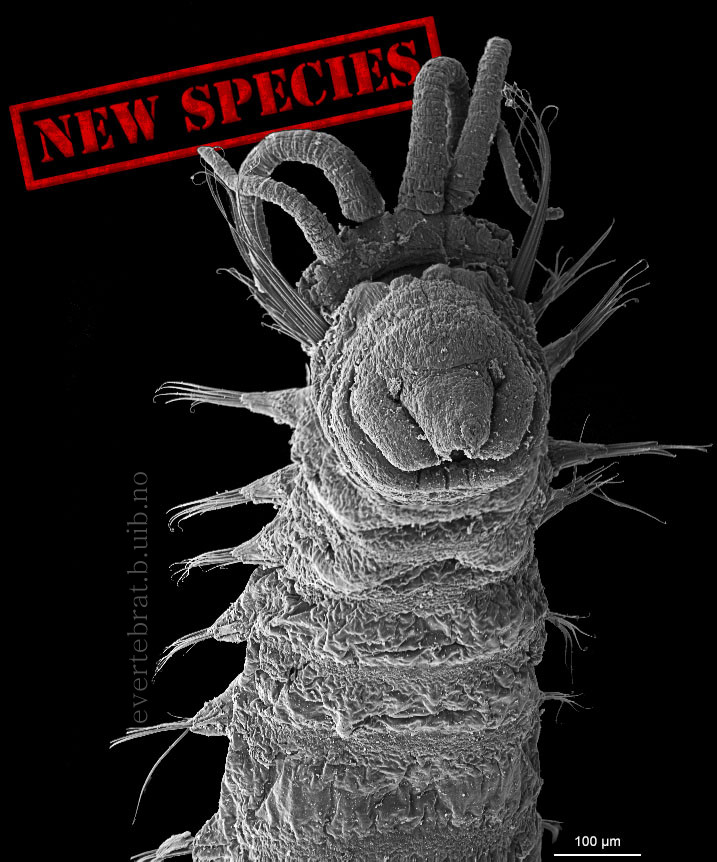
One of the tools used when describing a new species is the electron microscope, which allows us to take very detailed photographs of the animals. Photo: K. Kongshavn
The species has been decribed based on material collected by the University of Bergen in the Nordic Seas in the 80s, and from samples collected by MAREANO in more recent years. It occurs in deep waters between 600 and 1650 meters depth, and has a broad distribution. The type specimen of the species is from a location that MAREANO sampled in 2009.
Alvestad T., Kongsrud J.A., and Kongshavn , K. (2014) Ampharete undecima, a new deep-sea ampharetid (Annelida, Polychaeta) from the Norwegian Sea . Memoirs of Museum Victoria 71:11-19 Open Access.
Workshop aftermath
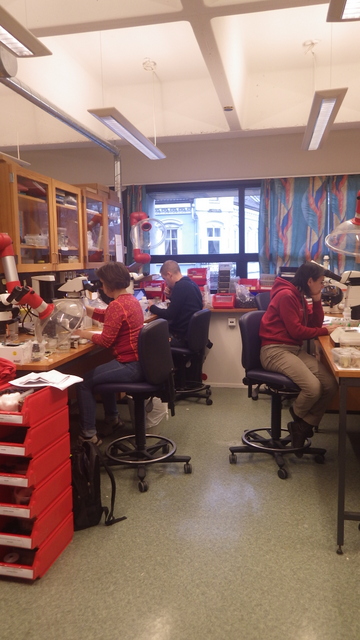 The lab is rather quiet today, compared with the frantic activity of last week – but there’s still plenty of work to do! We’ll catalog the identified material – several hundred entries – into our museum collections.
The lab is rather quiet today, compared with the frantic activity of last week – but there’s still plenty of work to do! We’ll catalog the identified material – several hundred entries – into our museum collections.
For NorBOL, a total of 250 polychaete specimens from 154 different species were selected for genetic barcoding, that’s pretty impressive! In addition, some of our participants selected material to loan with them, these will also in part become NorBOL-barcodes.
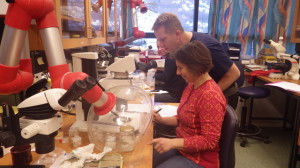 We’ll process these as quickly as we can, taking pictures, filling in the forms and taking tissue samples for analysis at the CCDB lab in Canada – fingers crossed for a high success rate on the sequencing!
We’ll process these as quickly as we can, taking pictures, filling in the forms and taking tissue samples for analysis at the CCDB lab in Canada – fingers crossed for a high success rate on the sequencing!
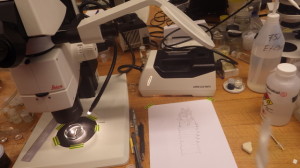
Preparing drawings using a camera lucida on the stereo microscope
As mentioned previously we focused on the MAREANO-material, but supplemented with other samples – including those that we have collected ourselves. That meant that beauties like this one (picture below) could be examined in detail by an expert, and get properly identified before we send it off to become part of the BOLD-database.
Thank you to all our participants for a very productive and fun week!

